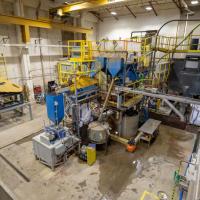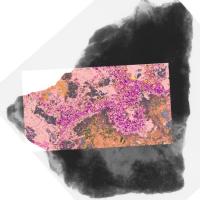SRC’s heavy mineral analysis team provides comprehensive flowsheets for concentrating and evaluating heavy mineral indicators. At our facility, we specialize in identifying and characterizing indicator minerals from a variety of geological samples and commodities, which is an important first step in finding new valuable deposits.
Our team of experts is committed to delivering accurate and reliable results to support all mineral exploration and mining projects. Whether you are investigating kimberlite indicator minerals or other economically significant heavy minerals, we have the expertise and resources to meet your analytical needs.
We offer a comprehensive range of services at our facility tailored to the diverse needs of mineral exploration companies.
Our expertise includes, but is not limited to, the following indicators:
Identifying minerals with specific chemistries, such as garnet, ilmenite, chromite and diopside that are indicative of diamond-bearing kimberlite pipes.
Concentrating and detecting gold grains and associated pathfinder minerals, including arsenopyrite, pyrite and chalcopyrite.
Identifying Platinum Group Minerals, such as braggite and cooperate.
Analyzing sulfide minerals, including chalcopyrite, sphalerite and galena to locate VMS deposits.
Investigating indicators for deposits of metals, such as lead, zinc and nickel.
Identifying minerals like monazite, xenotime and allanite that point to REE-rich deposits.
Detecting copper-bearing minerals, such as chalcopyrite, bornite and molybdenite.
Heavy Mineral Separation Concentration Techniques
Our team uses a range of techniques at our facility to ensure precise and efficient separation of valuable minerals from samples, with customized flowsheets developed on a project-by-project basis.
Methods include:
Wet sieving to wash and concentrate the sample into specific sizes for later concentration techniques.
Utilizing shaking tables, Knelson concentrators, Mosley tables and dense media separation (DMS). Specific gravity differences between minerals are exploited for effective separation.
Using heavy liquid separation to isolate minerals based on density differences. Different dense liquids can be used, such as Lithiumheteropolytungstate (LST) and Methylene Iodide (MI), with the density tailored to the target minerals.
Involves high and low-intensity magnetic separation to separate minerals based on their magnetic properties. This includes both ferromagnetic and paramagnetic separations.
Indicator Mineral Observation
Trained observers with decades of experience visually inspect the samples to identify potential indicator minerals. Identification of indicator minerals is performed using high-resolution optical microscopes.
To confirm visual identifications, a bench-top SEM is used to provide qualitative elemental compositions, ensuring accurate identification of a proportion of all samples.
Descriptions of indicator minerals are given based on standard practices.
Using a ZEISS photomicroscope, high-resolution digital images can be taken of individual grains and background concentrates to provide detailed visual data to complement our analytical services.
Detailed mineralogical characterization and indicator mineral counts are reported.
Additional Services and Techniques
Customized flowsheets and techniques for concentrating zircon grains.
Comprehensive crushing, grinding and splitting for representative samples.
Integrating mineralogical data with geochemical assays for robust exploration insights.
Electron microprobe analysis for detailed mineral grain composition.
To compliment the visual identification and description of any gold found, SRC also operates a state-of-the-art gold fire assay laboratory. This facility provides highly accurate and reliable gold analyses, allowing us to detect gold content in various geological samples.
Quality Assurance
The indicator observation circuit operates in accordance with ISO/IEC 17025, ensuring the highest standards of accuracy and reliability in our facility. This certification reflects our commitment to maintaining stringent quality management systems and delivering consistent, reliable results to our clients. The management system and selected methods are accredited by the Standards Council of Canada (Scope of accreditation # 537).
The laboratory is assessed on a regular basis, both internally and externally, to ensure that it continues to meet these requirements.
Sample Handling
To ensure the integrity of the process, a chain of custody is established between the customer and the laboratory. Customer samples are processed in a controlled environment to ensure that confidentiality is maintained at all times. All samples are handled according to defined security protocols during processing stages. Sample handling is conducted at the lab with due diligence.






